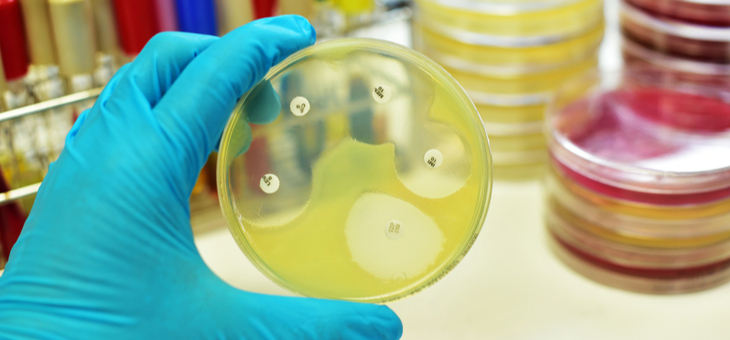Antibiotic-resistant pathogens have become an increasing problem. But researchers believe they have found a way to boost the effectiveness of antibiotics to take on the so-called ‘superbugs’.
Superbugs that are able to shrug off antibiotic treatments are the stuff of nightmares for infectious disease experts. The World Health Organization (WHO) lists antibiotic-resistant bacteria as one of its top 10 global public health threats.
Last year, the Australian government launched the National Antimicrobial Resistance Strategy – 2020 & Beyond aimed at reducing antibiotic resistance and committed $22.5 million over four years to pay for it.
But now, in a joint project between European Molecular Biology Laboratory (EMBL) scientists working at Monash University and Harvard University, researchers may have found a way to increase the effectiveness of antibiotics without having to resort to giving patients higher doses or waiting for new antibiotics to be developed.
Read: What should you eat after you have been on antibiotics?
It’s a little complex, but essentially works like this. When you’ve been infected with bacteria, the immune system sends out molecules called ‘chemoattractants’ to attract another type of cell called a ‘neutrophil’.
Neutrophils are a key component of your immune system and have the ability to envelop and kill dangerous bacteria.
“When looking at how our immune system can fight bacteria, there are two important aspects we look at,” says Dr Jennifer Payne, lead researcher on the project.
“The first is our ability to entrap bacterial cells and kill them. The second is the signals – the chemoattractants – calling for more neutrophils, white blood cells which lead the immune system’s response to resolve infection.”
Read: When will antibiotics kick in?
The research team found that by attaching a chemoattractant to an antibiotic, they could attract more neutrophils to the infection site and increase the immune response.
The bacteria used for the study was Staphylococcus aureus, better known as golden staph –one of the more problematic bacteria when it comes to antibiotic resistance.
“We’ve been working on using dual-function antibiotic-chemoattractant ‘hybrids’, which improve the recruitment of neutrophils and increase the engulfing and killing of the bacteria,” said Dr Payne.
“By stimulating our powerful immune system in this way with the immunotherapeutic antibiotic, we’ve shown in mouse models that the treatment is twofold more effective than just using the antibiotic alone at one-fifth lower dose.”
Read: Common questions for pharmacists
The team says it used a “combination of in-vitro assays, cellular assays, infection-on-a-chip and in vivo mouse models to show that the compounds improve the recruitment, engulfment and killing of S. aureus by neutrophils.”
They found that using the combination antibiotic resulted in a virtual doubling of the immune system’s response to infection.
The results are promising and human trials will be conducted with a patent granted to Monash University for the therapy.
The team is seeking funding partners to continue the research.
Do the rising rates of antibiotic resistance worry you? Do we need to put more funding into finding a solution? Let us know in the comments section below.
If you enjoy our content, don’t keep it to yourself. Share our free eNews with your friends and encourage them to sign up.

